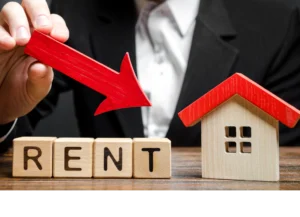Charge too little, and you’ll lose out on potential profits

How to Calculate Rent for Any Property
Setting the right rent for your property is one of the most critical aspects of successful real estate investing. Charge too little, and you’ll lose out on potential profits; charge too much, and you might struggle to attract tenants. The key is finding that sweet spot, and this guide will walk you through the essential steps to determine the optimal rental price for any property.
1. Do a Market Rental Analysis
A market rental analysis is a deep dive into the local rental market metrics. This step is essential for identifying trends that can set you up for long-term success and allow for higher rent increases in the future when executed correctly.
Steps to Conduct a Market Analysis:
-
Compare Similar Properties:
-
Look at properties within a half-mile radius of your property.
-
Focus on rentals leased within the last 6 to 12 months for accurate data.
-
Use rental estimate tools or consult with an investor-friendly real estate agent, especially if you’re in a non-disclosure state.
-
-
Consider Property Comparability:
-
Compare properties with similar attributes, such as size, age, and amenities. For example, a five-bedroom house built in 2009 on a 10,000-square-foot lot is not comparable to a two-bedroom townhouse built in 1987.
-
Identify at least three comparable properties to get a reliable rental range.
-
-
Understand Local Trends:
-
-
Study vacancy rates and rental demand.
-
Take note of factors like new developments or economic changes that could affect rental prices. For example, a new distribution center in the area might increase demand and drive rents upward.
-
Need a Lease Agreement?
Access 150+ state-specific legal landlord forms, including a lease.
2. Research Rent Control Laws
Examples of Rent Control Laws:
-
California: Rent increases are limited to 5% plus the rate of inflation or 10%, whichever is lower.
-
Florida: There are no caps on rent increases, but landlords must provide tenants with proper notice.
Why This Matters:
3. Calculate Operating Costs
Your rental income needs to cover operating expenses and still leave you with a profit. Overlooking these costs can result in financial strain, even if the property generates significant income.
Common Operating Expenses:
-
Maintenance and Repairs: Routine upkeep and emergency repairs.
-
Utilities: If you’re covering water, electricity, or gas.
-
Landlord Insurance: Protection against property damage and liability.
-
Management Fees: If you’re using a property management company.
-
Property Taxes: These can vary significantly by location.
-
Vacancy Costs: Budget for periods when the property might be unoccupied.
The 1% Rule:
A general rule of thumb is to charge 1% of your property’s value as monthly rent. For example:
-
Property Value: $300,000
-
Target Rent: $3,000/month
4. Account for Amenities and Unique Features
Examples of Rent-Boosting Features:
-
In-Unit Washer/Dryer: Tenants value convenience.
-
Modern Upgrades: Stainless steel appliances, granite countertops, or energy-efficient windows.
-
Outdoor Space: Balconies, patios, or access to shared amenities like a pool.
-
Location Perks: Proximity to public transport, schools, or shopping centers.
When pricing your property, highlight these features to potential tenants. This can differentiate your property in a competitive market.
5. Test the Market
Tips for Testing the Market:
-
Advertise on multiple platforms to reach a broader audience.
-
Monitor the number of inquiries and showings.
-
Be prepared to adjust quickly to avoid prolonged vacancies.
Testing the market allows you to gauge demand and fine-tune your rental pricing strategy.
Bottom Line
Calculating the right rent for your property involves thorough research, compliance with local laws, and a clear understanding of your operating costs. By conducting a market rental analysis, staying informed about rent control regulations, and factoring in amenities, you can set competitive rents that attract tenants and maximize profitability. Regularly review your rental strategy to adapt to market changes and ensure your investments thrive.
FAQ
1. What tools can I use for a rental market analysis?
You can use online tools like Zillow, Rentometer, or property management software to compare rental prices and analyze trends in your area. For non-disclosure states, consulting a real estate agent is invaluable.
2. How often should I review my rental prices?
It’s a good practice to review rental prices annually or whenever there’s a significant change in the market or local economy.
3. Can I charge different rents for similar units in the same property?
Yes, you can adjust rent based on factors like unit condition, floor level, or additional amenities. Just ensure compliance with local laws to avoid discrimination claims.
4. What is the 1% rule, and is it still relevant?
The 1% rule suggests charging 1% of the property’s value as rent. While it’s a helpful guideline, today’s market may require adjustments, such as using the 0.8% rule.













 Accessibility
Accessibility